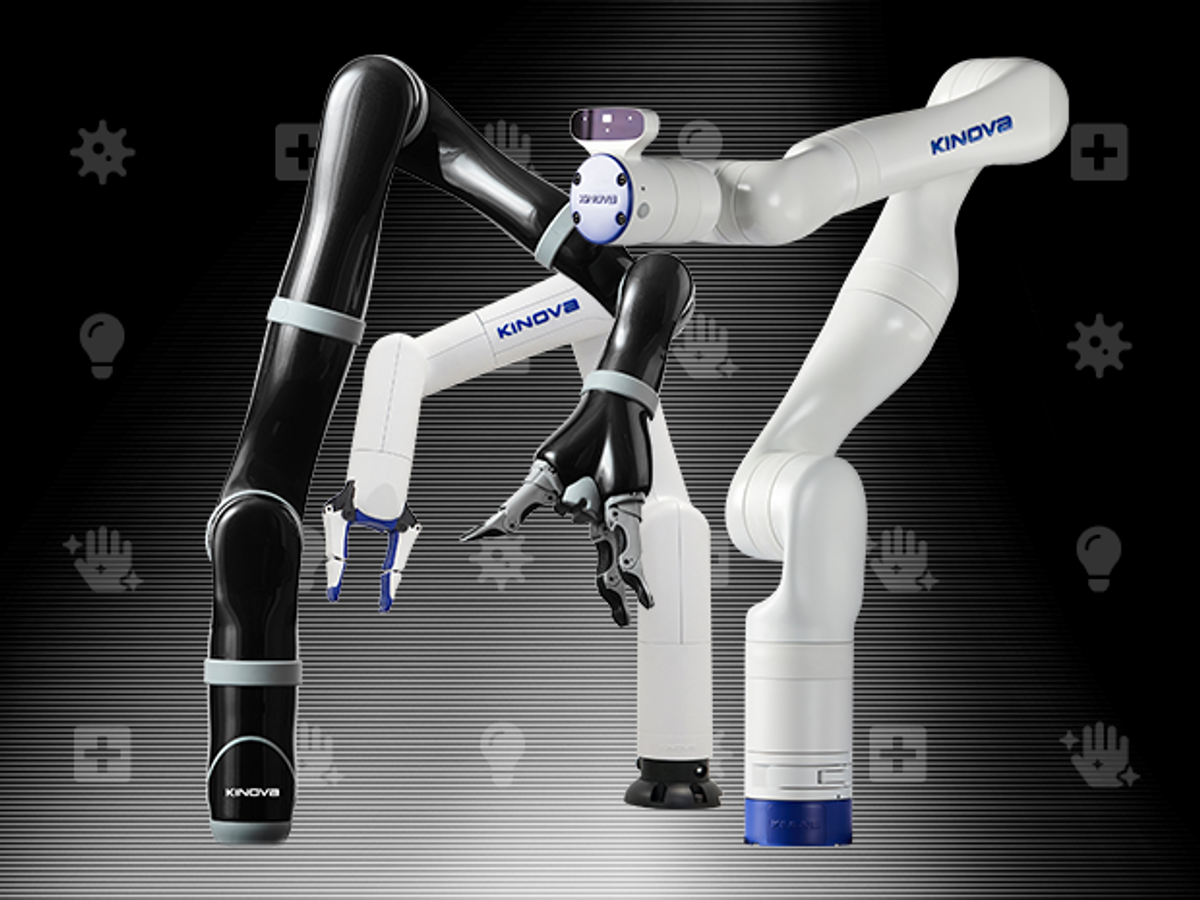Multiple companies turned to Kinova® robotic arms to create mobile platforms with manipulation capabilities to tackle many aspects of the sanitary crisis. The addition of a dexterous manipulator to mobile platforms opens the door to applications such as patient care disinfection and cleaning — critical to the fight against the virus.
Ever since the pandemic hit at the beginning of 2020, it became clear that the human resources available to address all the different fronts in the fight against the virus would be thinly stretched — especially considering the fact that these people are subject to falling ill. Mobile robots with manipulation capabilities were quickly identified as a solution to alleviate this problem by freeing skilled people from menial tasks and by allowing remote or automated work which keeps exposure to the virus to a minimum.
Multiple companies turned to Kinova robotic arms for an off-the-shelf manipulation solution suitable for mobile platforms. The history Kinova has with the assistive market is now at the core of the technology — assistive products such as motorized wheelchair-mounted robots like Jaco® were designed from the beginning to be extremely safe, user-friendly, ultra-lightweight, and power-efficient. This experience has transpired into more recent products as well. All these features do not come at the expense of performance, in fact, Kinova robots boast some of the highest payload-to-weight ratios in the industry. It does make sense that robots like these are ideal for applications involving mobile platforms and integration into products that are meant to be interacted with in non-industrial settings.
One of the companies that successfully made such an integration is Diligent, who developed a patient care robot called Moxi by integrating a Kinova Gen2 robot to a mobile platform powered by cloud-based software and artificial intelligence. Moxi is designed to help clinical staff with menial tasks that do not involve the patients, like fetching supplies, delivering samples, and distributing equipment, thus freeing skilled staff like nurses to perform more value-added tasks. Its rounded design and friendly face make interactions with it feel more natural for both the public and the hospital staff who otherwise may not be used to interacting with robots. In the current pandemic, one can easily understand how a robot such as Moxi can find its uses to alleviate the workload of healthcare workers and prove to quickly provide a return on investment for healthcare institutions.
Another type of menial task that became surprisingly important in the context of the sanitary crisis is that of cleaning. Prior to the crisis, Peanut Robotics, a startup from California that raised $2 million in 2019 was already developing a mobile platform carrying a Kinova Gen3 for cleaning commercial spaces such as restaurants, offices, hotels, and even airports. By coupling the 7 degrees of freedom robot to a vertical rail, their system can reach even the most inconvenient places. Rather than using specialized robot end-effectors to work, they take advantage of the flexibility of the robot gripper to grab tools similar to what a human would use, thus making it possible to clean an entire room with a single system, including spraying disinfectant, scrubbing, and wiping — and all that autonomously! With the current context where more surfaces need more frequent cleaning and where being in contact with objects comes with a higher risk of infection, surely we will see this kind of robot increasingly frequently.
However, not all environments are suitable for such a deep cleaning. Common areas in malls or airports for example are simply too large and possibly too crowded for such operations. It is these kinds of cases that A&K Robotics are tackling with their Autonomous Mobile Robotic UV Disinfector (Amrud) — a project selected for funding by Canada's Advanced Manufacturing Supercluster. They combined their expertise in navigation and mobile platforms with the capabilities of a Kinova Gen3 lite robot. The compact and extremely light (less than 6 kg) robot is carried around wielding a UV light source to disinfect surfaces. Its 6 degrees of freedom allow for more than enough flexibility to waive the light source around even the most complex surfaces. A&K already made the news a few times in 2020 by deploying their solution to assist in the disinfection of floors and high-touch surfaces. Whereas when they started the project back in 2017 they did not get much traction, it is clear that the recent needs got them much deserved attention.
As the pandemic settles, an always-increasing number of applications for robots are found. Be it traditionally non-industrialized industries looking to be more resilient to staff shortages or due to the democratization of working from home, robots are becoming more commonplace than ever. Kinova, with its wide range of robot type offers, is there to assist developers and integrators accomplish their tasks and contribute to the growth of the collaboration of robots in our daily lives.
To learn more about Kinova click here.



